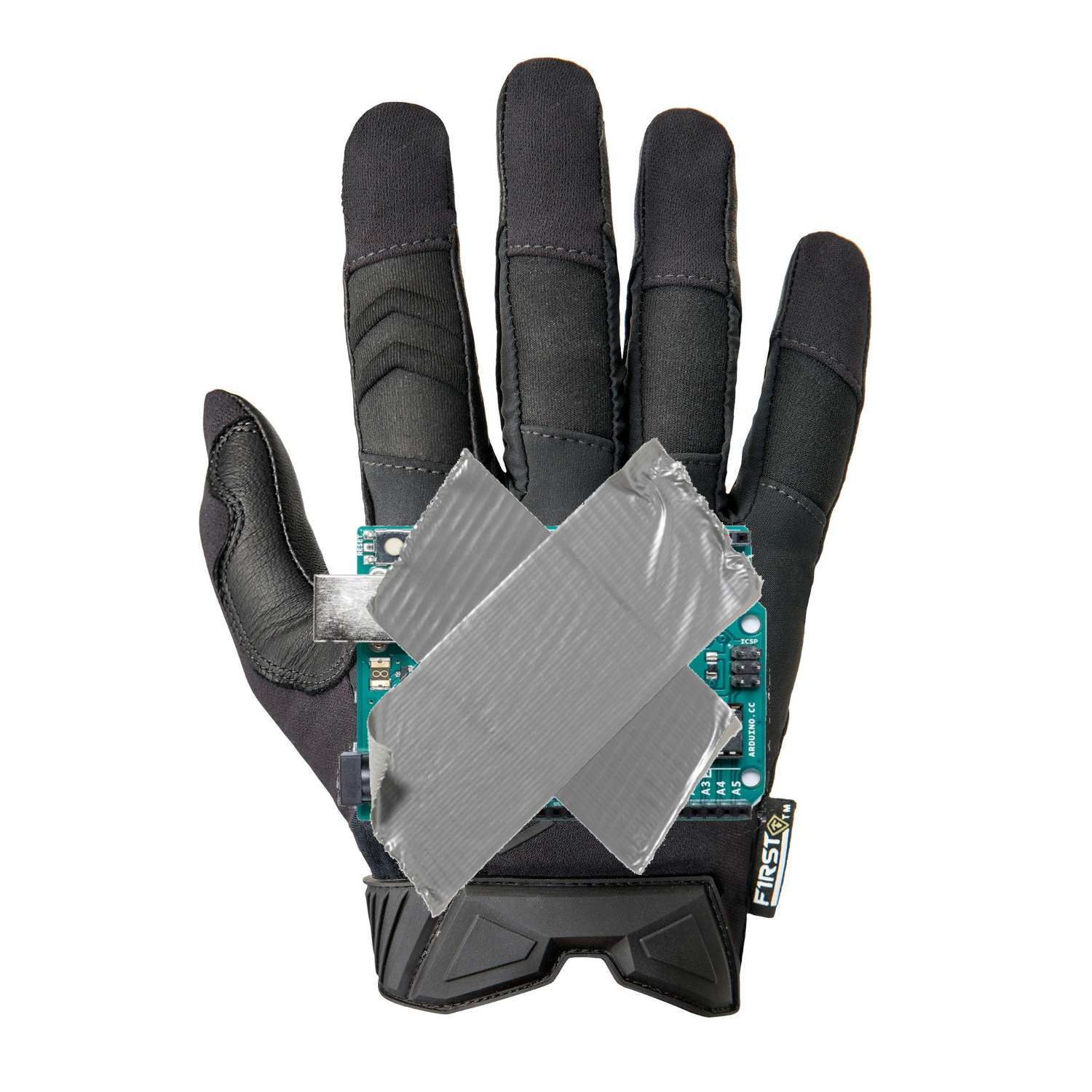Tappy Glove
Created on 29 Oct 2018
Gloves that let you send secret messages to your buds and pals
Ever been just absolutely sick of speaking? Did you suddenly go blind and deaf and you have no way of communicating except through touch? No? Well, that's understandable. That doesn't happen to many people.
Have you ever wanted to talk to your friend during a lecture because you have some funny jokes but the teacher doesn't let you talk or use phones or otherwise communicate? This is a glove that lets you communicate through morse code with taps, and uses haptic feedback to relay messages between two people.

@aquinn
Adam Quinn
@jafinn
Joe Finn
@sir
Sam Rainey
@eeschnei
Eric Schneider
@aragura1
Arjun Raguram
| Part | Cost | Quantity | Total |
| Conductive thread | $2.95 | 1 | $2.95 |
| Conductive thread bobbin | |||
| Sewing kit | $5.48 | 1 | $5.48 |
| Sewing kit for ease of sewing. | |||
| Gelante Wholesale 12 Gloves | $12.95 | 1 | $12.95 |
| Large multi-color gloves | |||
| Proto board | $9.58 | 1 | $9.58 |
| Mini solderable breadboards, backup if PCB fails | |||
| Wixel | $19.95 | 5 | $99.75 |
| General purpose transceiver with flash memory. Used to drive the motor and handle interglove comms. | |||
| Vibration motor | $2.15 | 9 | $19.35 |
| Haptic motor for vibrations | |||
| LilyPad Button Board | $1.95 | 24 | $46.80 |
| Push buttons to be sewed to glove fingers | |||
| TLV3701 Comparator | $3.19 | 7 | $22.33 |
| Comparator for debounce circuit | |||
| Micro LiPo charger | $5.95 | 2 | $11.90 |
| Charger for low mAh battery | |||
| 3.7v 500mAh LiPo | $7.95 | 6 | $47.70 |
| Battery for glove. | |||
| Project Totals: | 57 | $278.79 | |
| Track 1 Base Budget: | $250.00 | ||
| Preferred Vendor Budget Bonus: | $50.00 | ||
| Remaining Budget: | $21.21 | ||
Sam Rainey
15 Jan 2019, 7:21 p.m. EST
Sunday:
We received our parts from the build18 staff, and learned that our buttons were never shipped! We ordered buttons on SparkFun with overnight shipping immediately after retrieving the parts.
Sam Rainey
15 Jan 2019, 9:12 p.m. EST
Monday:
We began soldering components (besides the push-buttons) onto two of the PCBs. We also began working on downloading software to program the Wixel. We wrote code for the Wixel to receive incoming bytes from the radio and push them into a buffer, and process the bytes into the proper Morse code through vibration of the motor. We compiled the code, and tested the code, only to find that upon running the code, the Wixel lost USB functionality with the computer via the bootloader mode. Fortunately, the Wixel documentation includes how to hard-wire the Wixel into bootloader mode.
Sam Rainey
15 Jan 2019, 9:12 p.m. EST
Tuesday:
We added a reset and bootloader button to the circuit to make interfacing with the computer easier while our problem with the bootloader going on its own persisted. We also looked more into how to transmit/receive data using the Wixel. We began editing the code to fix the bootloader issue, and ensure that the receiving part of the code worked properly. We found that the motor did not respond was expected, but when we implemented the code using the yellow LED instead, we got the expected output from a pre-determined Morse code message. Then we worked on debugging the motor problems. We concluded that the motor works, and that there was a problem with the circuit. We then adjusted the circuit, and the motor started to work.